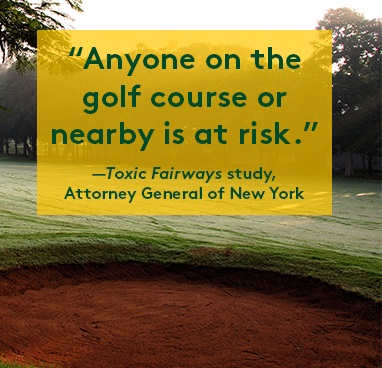Golf Courses are an Environmental Catastrophe

In my Consumer Education course, we were required to interview for a job. The job I interviewed for was the management and upkeep of a golf course. The sole question I had as I walked out of the interview? Why would New Trier endorse a job that is terrible for the environment and the people who live nearby?
To begin, the truth is that golf courses are a nightmare for the environment, often clearing forests and replacing them with imported turf, resulting in deforestation and a decrease in biodiversity. Additionally, golf courses take a sledgehammer to local, potentially fragile ecosystems. For example, the golf course for the 2016 Rio Olympics was built within “the Marapendi Environmental Protection area, which was a coastal habitat for ‘sandbank native vegetation and animal life, including endangered species’” (Sewell, Seattle Journal of Environmental Law). It was also part of a UNESCO threatened biome. The report also described how the government of Brazil misled the public on the environmental impact, cherry-picking pictures that showed only a fraction of the true damage. Furthermore, the grass imported for the fairway in Brazil was not natural to the ecosystem.
Additionally, golf courses exacerbate water shortages and proliferate harmful pesticides. According to the Gold Course Superintendents Association of America, the professional association for the golf industry, US golf courses on average use over 2.08 billion gallons of water per day. With California alone having more than 1,000 golf courses and facing a severe water crisis, it is simply irresponsible to divert such a precious resource to the fancies of such a small number of people, with less than 10% of Americans playing golf. Additionally, many golf courses use pesticides, which run off into local waterways and can have a devastating effect on local ecosystems, according to Jay Feldman, the director of Beyond Pesticides. According to a report by New York’s Attorney General, “Anyone on the golf course or nearby is at risk…People living near a golf course may be affected by sprays and dusts blown from the golf course onto their property and into their homes. Finally, pesticides applied to the turf may run off into surface waters or leach down to groundwater, which can then expose people to contaminated drinking water.”
Golf courses also waste an enormous amount of land. In the United States alone, they take up about 2 million acres of land. That’s more than the state of Delaware, and more than 200 hundred times the land area of New Trier. California alone has 137,000 acres of golf courses. That’s enough land for more than 20 million units of medium-density housing, 5 times what is needed to solve California’s current housing crisis. For example, the Bel-Air Country Club, in South Bel-Air, is a “18-hole golf course” in an area with land values over $1,000 per square foot. If the government were to nationalize or restrict golf courses, this land could easily be converted into affordable housing.
With the cost of golf courses extending far beyond that of a simple attendance fee, why should we continue with this detrimental sport?

Welcome to the New Trier Political Journal! I’m one of our contributors, and I primarily write articles about national and international politics. Some...











Billy Stromberg
Feb 11, 2024 at 10:20 am
I live on a golf course 🙁